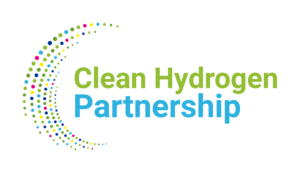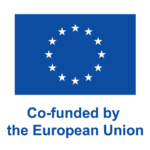Sister projects
The SWEETHY project will cluster its activities and collaborate with other projects that are similar or funded under the same call. The aim of this clustering is to align communication and dissemination efforts among the projects.
ASTERISK
ASTERISK aims to integrate seawater treatment with green hydrogen production using a PGM-free anion exchange membrane (AEM) electrolyser. The project focuses on developing stable AEM stack components for saline conditions, including electrocatalysts, membranes, and porous transport layers. A minimal seawater treatment removes biological and suspended solids while retaining natural ions. ASTERISK targets improved durability (<5% degradation over 500h) and will demonstrate 100 g H₂/h production on a 5 kWe stack running 2000h, reaching TRL 4. Complemented by eco-design, socio-economic analysis, and techno-economic planning, the project aims to enable cost-effective, sustainable green hydrogen aligned with EU carbon neutrality goals.
HySEas
HySEas develops direct seawater electrolysis using a Bipolar Membrane Water Electrolyser (BPMWE) combining cation and anion exchange layers with a water dissociation catalyst. The project addresses BPMWE durability and performance challenges by integrating salt recovery and metal ion removal through innovative oxide particle treatments. It reduces critical raw materials by minimizing iridium use and replacing Pt- and Ir-based catalysts with Fe, Ni, Mo oxides and metal phosphides, sulfides, and carbides. Plasma treatment enhances catalyst activity and transport. Advanced multiscale computational models guide design, while extensive stack testing evaluates performance and durability for efficient seawater electrolysis.
Sea4Volt
Sea4Volt aims to develop a novel low-temperature Anion Exchange Membrane (AEM) electrolyser for efficient, selective, and durable operation using direct seawater under a slight pH gradient. The project focuses on new materials—catalysts, membranes, coatings, and more—and an innovative design to create a corrosion-resistant, high-performance prototype. Emphasising PFAS-free and non-CRM components, AEM technology promises lower costs and improved sustainability. Results will be shared publicly to maximise impact across the European electrolyser industry. Sea4Volt also targets freshwater-scarce regions, offering a scalable solution for green hydrogen production and supporting economic growth, especially in areas with abundant seawater resources.
ANEMEL
Green hydrogen is key to achieving net zero but traditional production methods are often slow, costly, and inefficient. The ANEMEL project, funded by the European Innovation Council and led by the University of Galway, Ireland, aims to develop efficient electrolysers powered by renewable energy. These electrolysers will use non-critical raw materials in all core components, including electrocatalysts and membranes. This approach lowers costs, enhances recyclability, and reduces waste. By using low-quality water sources such as seawater and wastewater, ANEMEL seeks to make green hydrogen production more sustainable and economically viable, offering a competitive edge in clean energy technologies.

